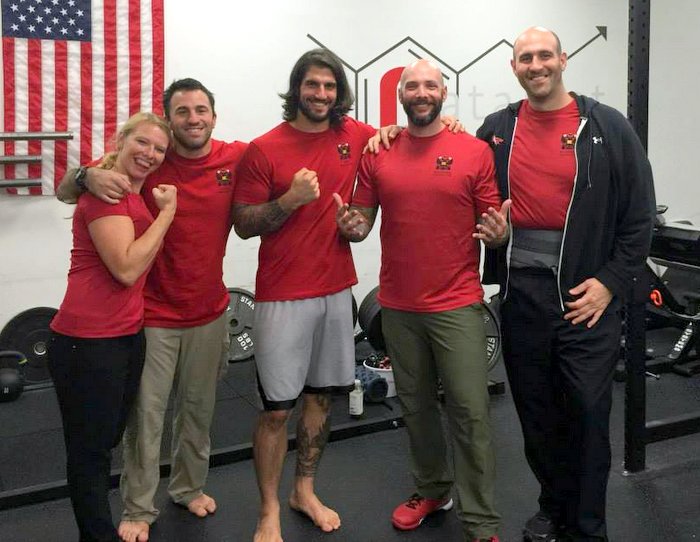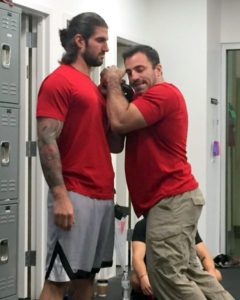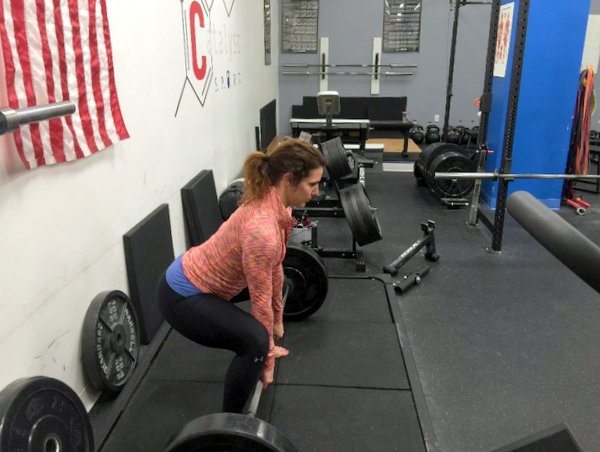
“What sets and reps should I use to make progress on my TGU?”
This is one of the most common questions about programming kettlebell training. Finding the right scheme of sets and reps is especially challenging because the get-up doesn’t follow the same rules as any other exercise in the gym. Because a single repetition of the TGU can take roughly 30-seconds, doing “5 sets of 10” simply doesn’t make sense.
Below are a few of the strategies that I’ve found to be effective for adding the TGU into your strength training program.
1. The “3-Week Wave Cycle”
This first option is intended for intermediate to advanced kettlebell lifters, and it’s my favorite way to use the get-up as a “main lift.” In other words, this option will treat the TGU as a primary exercise. Make sure that you’re relatively fresh in your workout (I would recommend doing get-ups first), leave plenty of time, and don’t plan to do an excessive amount of assistance work afterwards. Simply put, this progression WILL produce PRs.
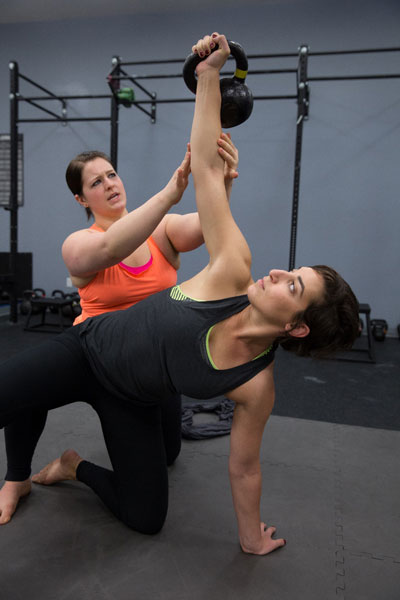
Do get-ups once per week, according to the following loading scheme:
- Week 1 “Volume Accumulation”: 8-12 get-ups with a medium weight (a good rule of thumb is 60-70% of your best-ever TGU).
- Week 2 “Weight Ladders”: Choose three kettlebells, a light kettlebell, a medium-heavy kettlebell (similar or slightly heavier than week 1), and a heavy kettlebell (not quite your personal best). The kettlebells should be evenly spaced about 4-8kg apart (12-16-20, or 24-32-40, for example).Perform 3 rounds of 1 TGU on each side, first with the light kettlebell, then with the medium, and finally with the heavy kettlebell. The idea is that the heavy kettlebell will show you where your technique needs work, then the light kettlebell will allow you to practice and correct technique errors or inefficiencies. The “wavy” load is also useful for learning.
- Week 3 “Run the Rack”: On this day, you’ll start with a very light kettlebell, perform a TGU on each side, and keep working up to progressively heavier kettlebells. Once you’ve reached the heaviest kettlebell you can manage for that day (which may or may not be a personal best), work with it for a few sets. Then perform a few slightly lighter get-ups to cleanse your palate. The total number of get-ups per side for the entire workout should be 8-10.
- Week 4: Either start at Week 1 (trying to exceed either the previous weight or number of reps from last time), or take a light week to recover.

Here’s an example of how this program might look over a few months. In this example, the athlete’s previous personal record for the TGU is a 40kg kettlebell:
- 32kg x 8 reps per arm
- (28-32-36) x 3 cycles; 9 total get-ups per arm
3. 16×1, 20×1, 24×1, 28×1, 32×1, 36×1, 40x1x2, 32×1 - 32kg x 9 reps per arm; Note that this is more than the 8 reps in week 1
5. (28-32-36) x 3 cycles; a chance to drill technique - 16×1, 20×1, 24×1, 28×1, 32×1, 36×1, 40x1x3, 32×1; On this day he manages one more rep at 40kg vs. the prior week.
- Rest week
- 32kg x 10 reps per arm; Note that this is more than the 9 reps in week 4
- (24-32-40) x 3 cycles; Today he feels strong and increases the top set from 36kg to 40kg, but drops the weight on light and medium bells such that he can still complete the workout comfortably.
- 16×1, 20×1, 24×1, 28×1, 32×1, 36×1, 40×1, 44×1 PR!, 36kgx1 32×1;Today, he sets a new personal record before dropping down!
2. The TGU as a Warm-Up
Simply perform 3-5 get-ups with a light-medium kettlebell (~50% of your best-ever get-up) before your scheduled workout. This is a great option if you’re working on a more involved bodyweight or barbell program, and don’t have the bandwidth or desire to fit a lot of get-ups into your program. This option also emphasizes the idea that the get-up is not just training, but also assessment.
A note on the get-up as assessment: While we use the TGU as a stimulus for adaptation, the TGU also has a useful role as a form of assessment. By mindfully practicing the get-up and noticing where the challenges are and how they evolve, you can gain important insights into the quality of your movement. For example, if I’m in a heavy powerlifting cycle involving high-volume bench pressing, and the “low sweep” of my get-up starts becoming challenged, I might conclude that my pectoral muscles have become tight, and that I need to spend some time mobilizing my overhead position.
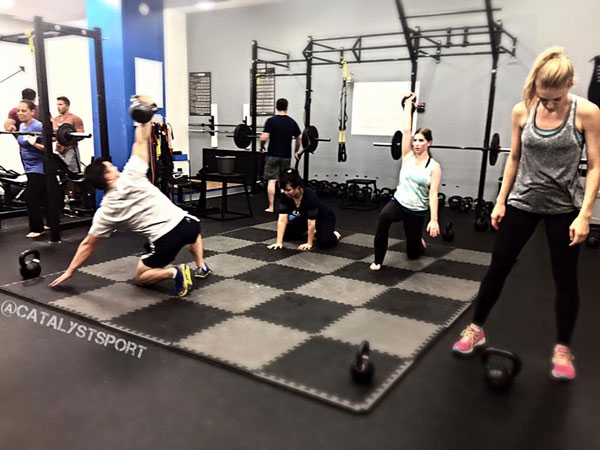
3. 10-15 Minute Practice Blocks
Simply set a timer for 10-15 minutes and practice the TGU until the time is up.
This is our preferred way to teach the get-up to novices in a personal training or semi-private training scenario. While this program works great for those working with a coach or trainer, it’s also an excellent option for self-coached kettlebell lifters. When learning, it can be useful to remove the pressure of hitting a certain weight or number of reps, and let the athlete simply explore the movement and work on technique. We usually program this towards the end of a training session.
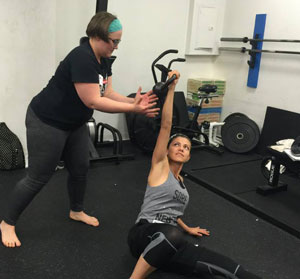
4. 10-15 Minute Work Capacity Blocks
This option uses exactly the same parameters are #3, except with a different purpose. Now, the goal is to perform as many get-ups as possible within the time interval, while never sacrificing quality for quantity. Record your results, and look to improve each week. This is a great option for losing weight while also improving movement quality, or for conditioning and building work-capacity.
An appropriate weight for this option is anywhere from 50-75% of your best get-up.
****
Jason Kapnick is the co-founder of Catalyst SPORT, one of New York City’s top kettlebell training facilities. He has made multiple Elite powerlifting totals, with best lifts of 545/355/660 in the 198lb weight class, and achieved the Beast Tamer Challenge at his RKC in April 2013. He can be contacted through catalystsportnyc.com .
